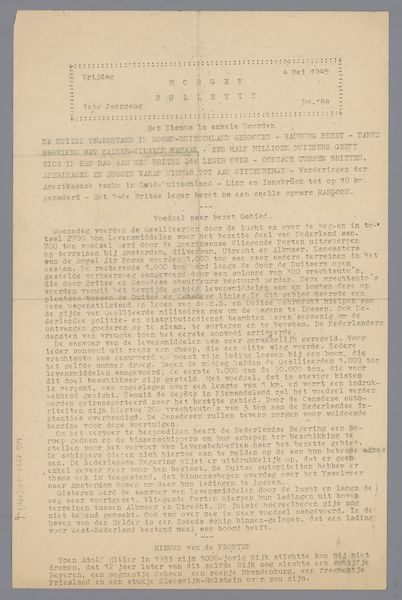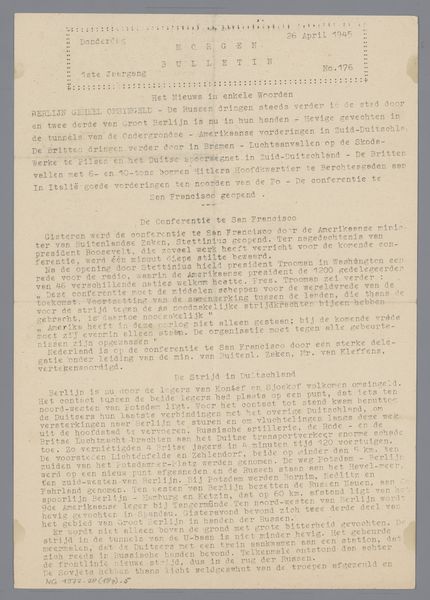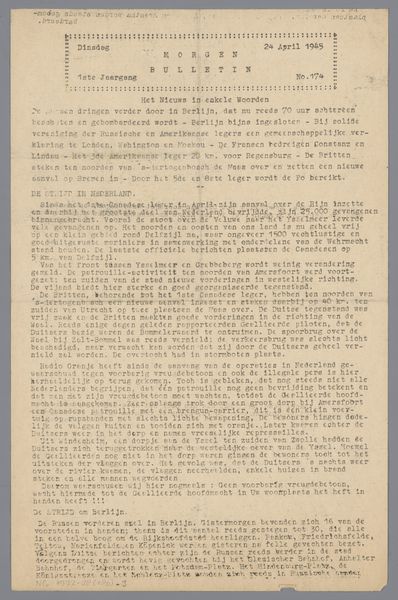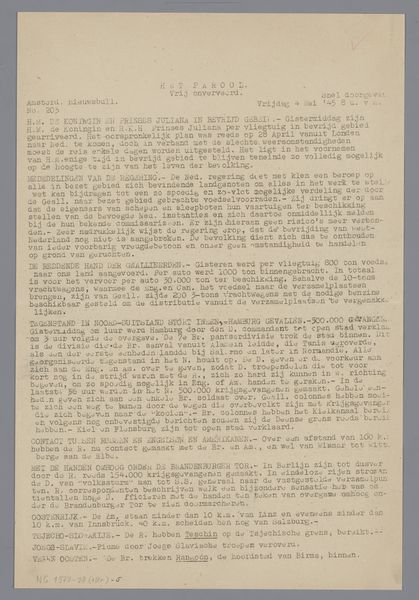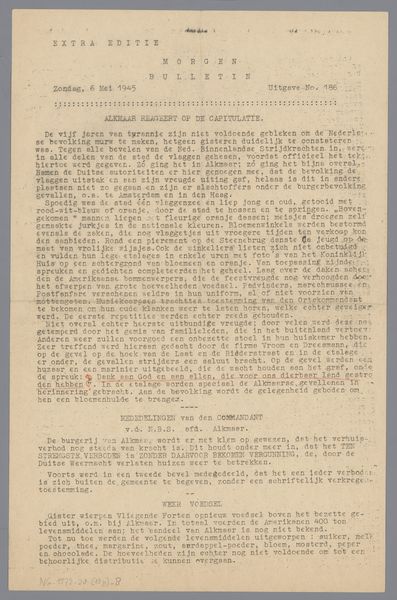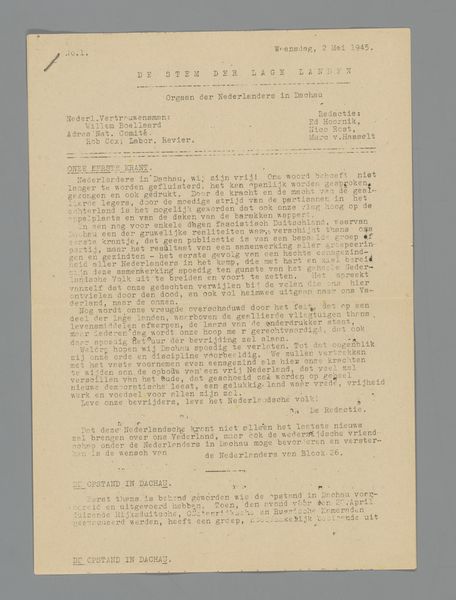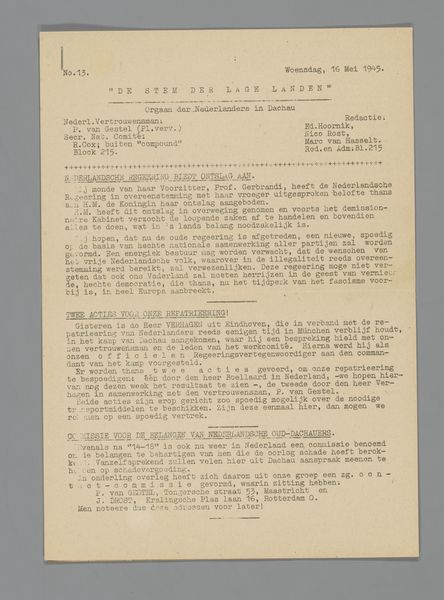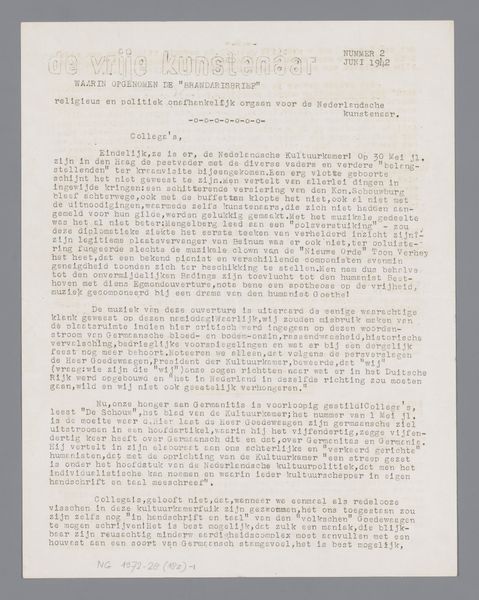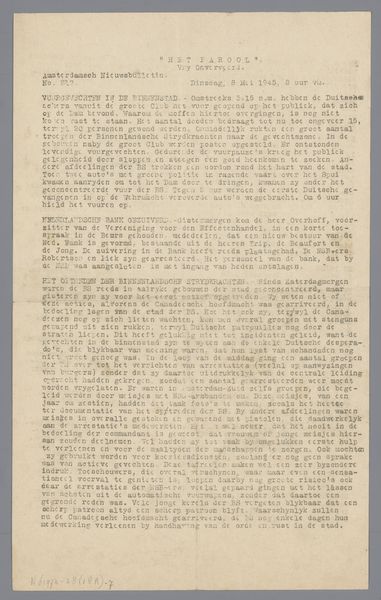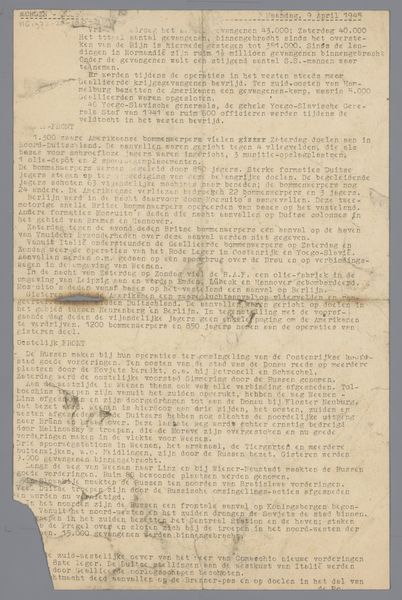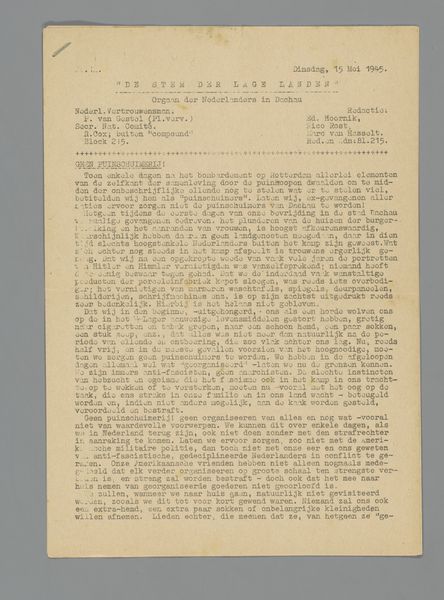
Dimensions: height 32.6 cm, width 21.7 cm
Copyright: Rijks Museum: Open Domain
Curator: Here we have a collotype print titled "Morgen Bulletin," attributed to P. Duyff, and tentatively dated to 1945. It seems to be a broadside or announcement, covered with dense typography. What's your initial impression? Editor: Overwhelming! It's a sea of text, and the texture of the paper adds to the feeling that this is a very tangible object from the past. It evokes a sense of urgency, of important information struggling to reach people. It feels both bureaucratic and intensely personal at the same time. Curator: That’s an astute observation. Broadly, this print encapsulates the political situation of the time and serves as narrative art; with many examples produced as tools for conveying wartime information. Collotype, a photomechanical printmaking process, allowed for relatively quick reproduction, vital during those years. Editor: Knowing that makes its contents all the more potent. The density speaks to the restrictions on paper, but more powerfully about its importance to be available, its preciousness at the time. I wonder what it says! Curator: Indeed. The text appears to relay news and instructions—primarily discussing Allied efforts to airdrop food into German-occupied territories, providing warnings to the civilian population about how to avoid danger during such operations. It's simultaneously informational and a call to action. Editor: It’s quite extraordinary to think about how that language would have felt to someone at the time, facing profound material scarcity and moral injury in conditions of siege. Each word becomes a lifeline, providing literal substance—access to food. Curator: It’s also a clear example of how visual media was used in a public service role. The artist isn't just making an aesthetic statement but directly contributing to a critical communication network, working with socio-political and institutional machinery to shape perceptions. Editor: And challenging traditional notions of what ‘art’ could be, placing the artist into the center of a network of action, providing communities with the chance for survival. Thinking about this collotype, I am intrigued by art’s power to create immediate material impact. Curator: I agree. Revisiting "Morgen Bulletin" helps us consider not only the context of post-World War II print but also art's role as an essential form of public service. Editor: Yes, it highlights how images and the written word can serve as catalysts for survival, fostering resilience amidst crisis, so as to remind us that art matters profoundly beyond aesthetics.
Comments
No comments
Be the first to comment and join the conversation on the ultimate creative platform.
